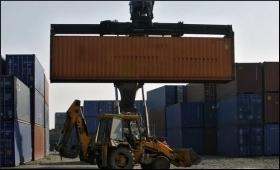|
|
|

|
'Robust demand for imports to provide upside risk to FY23 CAD projection of $105bn'
|
|

|
|
| Top Stories |
 |
|
|
|
IANS | 17 Aug, 2022
The trade deficit figures in the coming months is expected to moderate
in the coming months due to lower commodity prices and easing pressure
on global supply chains, increasing risks to exports and relatively
robust demand for imports is now likely to provide an upside risk to our
FY23 current account deficit projection of $105 billion, Acuite ratings
said in a report.
The increasing pressure on
merchandise trade deficit is a confluence of six factors such as
domestic pent-up demand, slowdown in global growth, lagged impact of
elevated commodity prices, temporary export restrictions imposed by the
government and persistence of supply chain pressure.
India's trade deficit in July 2022 widened to $31.02 billion from $26.18 billion in June due to inflated commodity prices.
The
merchandise exports in July have moderated ro $36.3 billion from $40.1
billion in the previous month. This translated into an annualized growth
of 2.1 per cent on-year, the weakest in last 17-months.
The drop
in momentum in exports is driven by the intense global headwinds,
continuing geo-political conflict and importantly, the sharp rise in
interest rates in the developed economies that induced capital flows out
of developing nations and a significant depreciation in their
currencies.
The sequential decline was led by Petroleum Products,
Agri & Allied Products, Gems & Jewellery, Chemicals, Machinery
Items, and Textiles.
The decline in oil exports could be on
account of correction in international prices as well as imposition of
windfall tax by the government.
On the imports front, merchandise imports came in at $66.3 billion in July.
Electronic
Items, Base Metals, Agri & Allied Products, and Gems &
Jewellery were key sub-categories within imports that saw a sequential
increase during the month.
While, chemicals saw a modest sequential increase, it nevertheless touched a record monthly high of $6.4 billion in July 22.
Cumulative
imports for the first four months of FY23 stand at $256.4 billion,
marking an expansion of 48.1 per cent compared to the corresponding
period in FY22.
|
|
|
| |
|
|
|
|
|
|
|
|
|
|
|
|
|
|
| |
| Customs Exchange Rates |
| Currency |
Import |
Export |
US Dollar
|
₹91.25
|
₹89.55 |
UK Pound
|
₹122.85
|
₹118.85 |
Euro
|
₹107.95
|
₹104.3 |
| Japanese
Yen |
₹59 |
₹57.1 |
| As on 29 Dec, 2025 |
|
|
| Daily Poll |
 |
 |
| What is your biggest hurdle to scaling right now? |
|
|
|
|
|
| Commented Stories |
 |
|
|
|
|
|
| |
|